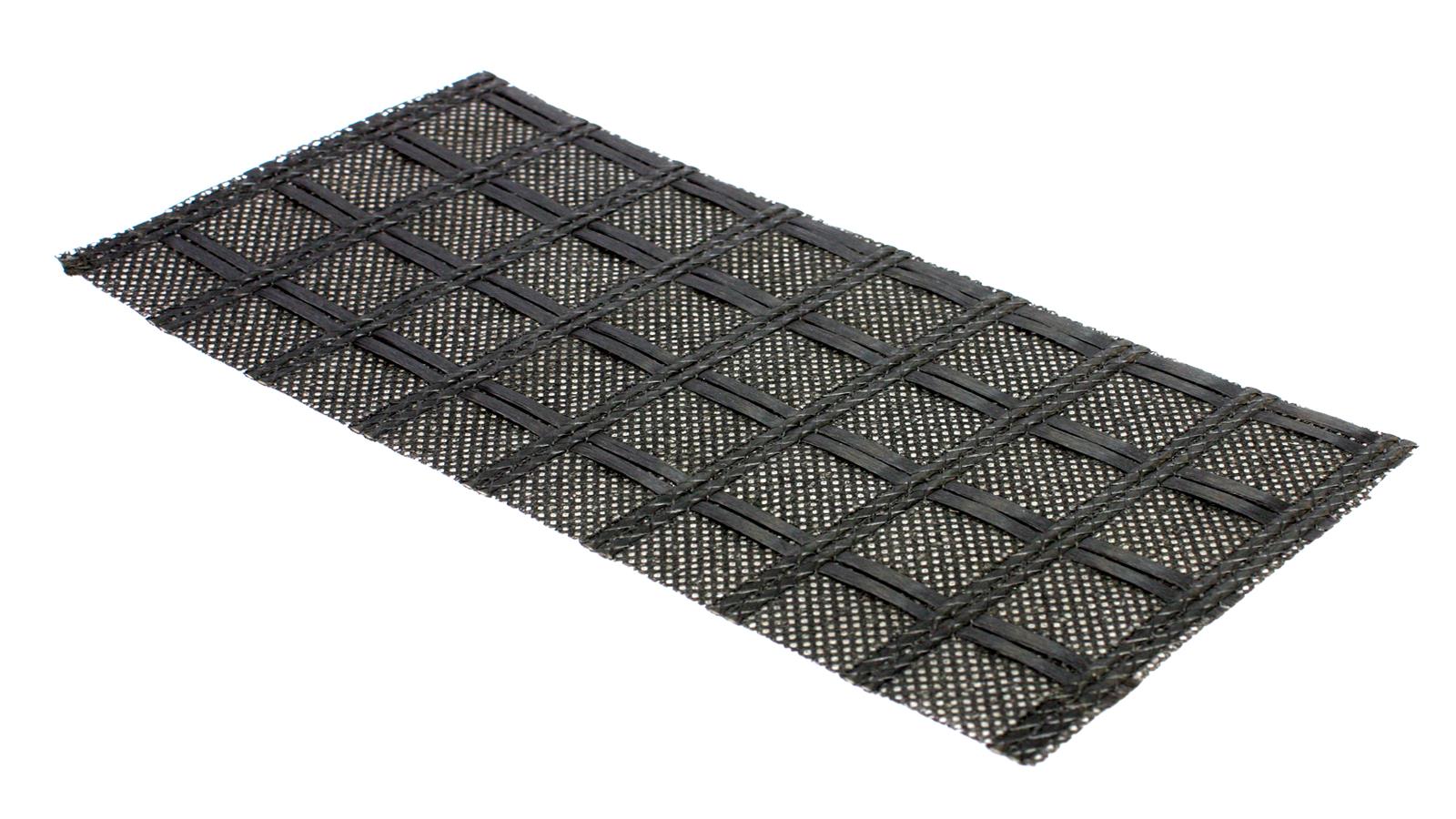
Recently, geocomposite material combinations have extended beyond just synthetic materials. Some manufactures now create products by combining geotextiles with nonsynthetic materials, such as bentonite clay, to address specific applications with minimum cost.
Geocomposite styles
While there are new material combinations being offered every year, in very general terms there are three geocomposite styles.
1. Contractors often place a geocomposites that combines a geogrid with a nonwoven geotextile to solve bearing problems on soft soils. The geogrid assumes the reinforcement role while the nonwoven geotextile assumes separation and filtering roles. This combination helps to firm up the structure by allowing water to pass through while keeping coarser particles from passing into the soft soil.
Typical applications include base and subbase stabilization and reinforcement for temporary and permanent roads, railways, storage yards, container terminals, temporary working platforms, airport runways, sludge lagoons and tailings ponds.
2. Geocomposites that combine a geotextile with a geonet are often used for drainage. The geotextiles encase the geonet core and serve to keep larger debris from entering the geonet. Liquid flows through the geotextiles into the geonet and away to a collection point. This geocomposite style is often used on landfills to intercept and convey leachate to collection sites.
Geocomposites and Asphalt Paving
While reflective cracks are observed at the road’s surface, they are generally not caused by traffic. Over time, asphalt roads can be exposed to subsidence or bending, and the cracks eventually make their way to the surface. Once the cracks are exposed they allow water into the pavement. Moisture in the subgrade weakens the pavement structure and causes spalling (separation and loss of material) at the crack, bums, and wear. Left untreated, the road will eventually deteriorate.
To avoid the formation of reflective cracks, contractors place geocomposites, such as grid-reinforced bituminous membranes, during paving in between coating layers. These products provide both reinforcement and crack prevention.
There are Two Types of Asphaltic Geocomposites
1. One type of asphaltic geocomposite is a combination of a geogrid and a geotextile specially manufactured for paving conditions. The two components are thermally bonded and form a robust material. The geogrid often has rigid nodes that increase the pavement’s endurance. This material is used to reinforce the coating layers with a minimum thickness of 70 mm.
2. The second type of asphaltic geocomposite is made of a network of glass filaments mounted on a non-woven geotextile. They are used to reinforce the coating layers with a minimum thickness of 40 mm. These are suitable for absorbing the long lasting loads such as those caused by the freeze-thaw cycle and stresses induced by temperature.
